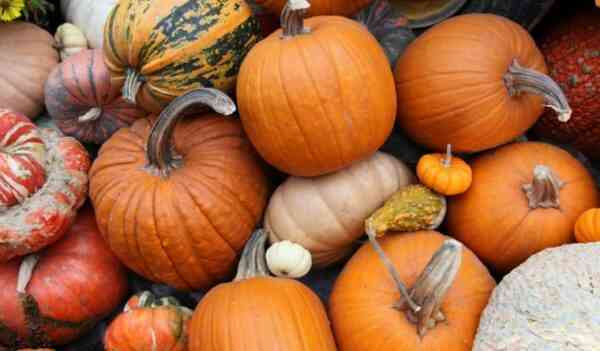The pumpkin plant is very important for agriculture. It is used for food, some of its varieties are grown as animal feed, and representatives of certain nations make a variety of things from pumpkins, sometimes very unusual. These fruits are very diverse, and they readily take root in a wide variety of conditions, demonstrating powerful survival abilities.
Interesting facts about pumpkin
- The largest pumpkin in the world is a giant one. The record-breaking specimen was grown in Belgium, and its weight was more than a ton – 1190 kg.
- In South America, the Indians grew pumpkins long before the arrival of Europeans (interesting facts about South America).
- These plants are both annual and perennial. There are only about 100 species of annuals.
- From the point of view of botany, pumpkin, like watermelon, belongs to berries.
- In different countries, soups, pastries and many other dishes are prepared from pumpkin.
- In total, there are now about 800 varieties of this plant in the world, but only a quarter of them can be eaten.
- Modern pumpkins appeared on Earth very recently, about 7000 years ago. Most likely, they were brought out by the first breeders from among the ancient people (interesting facts about primitive people).
- In ancient times, on the territory of modern Ukraine, orange pumpkins were part of matchmaking ceremonies.
- Mexico is the birthplace of pumpkins. Since then, this plant has spread throughout the world.
- Due to the high content of vitamins A and E, regular consumption of pumpkin slows down the aging process.
- It takes 30-40 medium-sized pumpkins, like those that grow in the gardens of Russian summer residents.
- Vitamin T contained in pumpkins helps the body absorb heavy foods more easily.
- The iron content in pumpkin pulp is higher than that of any other vegetable. Yes, yes, this is not a vegetable, but a berry, but still they are used to considering a pumpkin a vegetable (interesting facts about iron).
- On average, a pumpkin is 90% water. The exact value depends on the type of plant.
- In Germany, in the city of Ludwigsburg, a pumpkin festival takes place every autumn.
- Zucchini, cucumbers and watermelons are botanically related to pumpkins.
- The Irish have long carved lanterns for the Samhain holiday, which became the prototype of Halloween, from swede. In the USA, their descendants decided that it was easier to carve pumpkins due to their softness.
- French explorer Jacques Cartier, the first among Europeans to discover pumpkins, mistook them for giant watermelons.
- Flowers of some species pumpkins are quite edible (interesting facts about flowers).
- In ancient times, many healers believed that pumpkin helps with snake bites. In fact, it is not.
- Fresh pumpkin juice is a natural sleeping pill.
- Pumpkin seeds are very useful, and the seeds A fully ripe pumpkin is an order of magnitude healthier than the seeds of a young one.
- South American Indians once made rugs and mats from dried pumpkin strips.
- Fresh pumpkin pulp helps relieve the pain of superficial burns.
- In Kyrgyzstan, bottles for storing koumiss are made from pumpkins of a special variety. They keep this traditional drink fresh longer.
- Once a year, a major pumpkin festival is held in Japan (interesting facts about Japan).
- Pumpkin juice is a natural antioxidant.
- In Argentina, Uruguay and Paraguay, mate, a local analogue of tea, is very popular. It is brewed in vessels made from the dried fruits of small gourds, de-pulped.
- In some African countries, locals use dried pumpkin fruits as motorcycle helmets.
- Medieval alchemists almost always included pumpkin juice in love potions (interesting facts about the Middle Ages).
- In some Chinese In the provinces, a pumpkin is considered a powerful talisman that protects its owner from evil forces.
- Despite the fact that the Indians ate pumpkins from time immemorial, Europeans at first were distrustful of this fruit, and began to eat it only in the 16th century. century.
- Pumpkins came to Europe, according to some sources, thanks to the expedition of Christopher Columbus (interesting facts about Columbus).
- Most of all pumpkins in the world are grown in the US state of Illinois.
- In some countries of Central Asia, cages for small songbirds are made from large pumpkins.
- Pumpkins come in a variety of colors – orange, yellow, white, green, blue, and even striped. The shapes are also different, from round or elongated to pear-shaped.
- These fruits are very low in calories. One kilogram of pumpkin contains only about 250 kcal.
